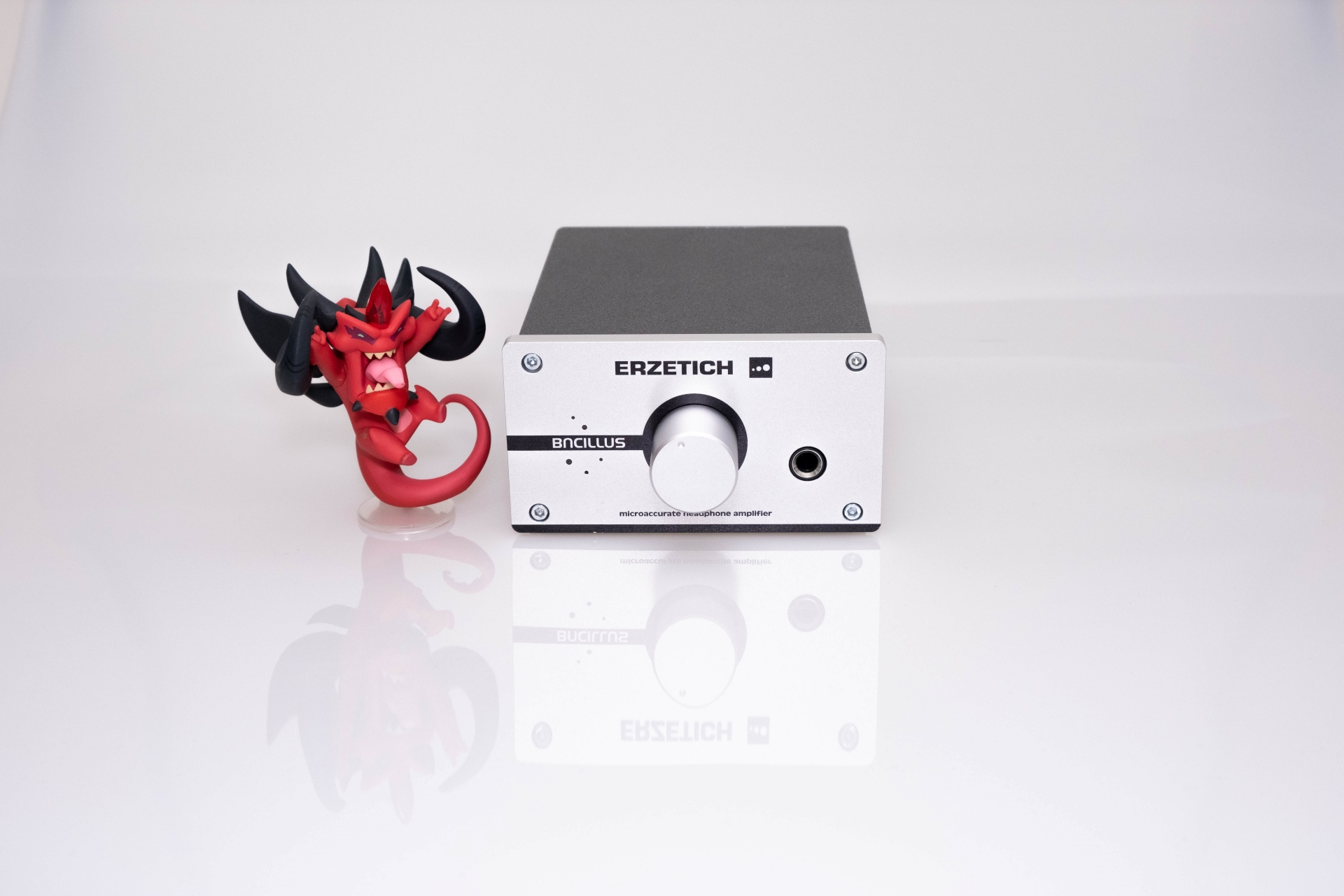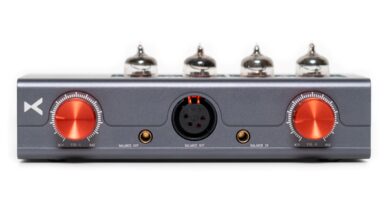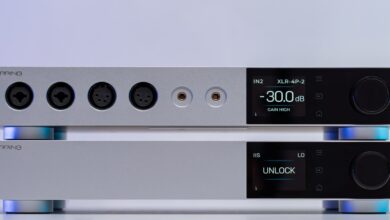Erzetich Bacillus Review – An evil headphone amplifier

Disclaimer : The Erzetich Bacillus was sent to us free of charge in exchange for our honest opinion. We thank team Erzetich Audio for that!
My video review:
Erzetich Audio is a fresh and new audio manufacturer for me, but that doesn’t mean Blaz Erzetich – the founder and the man behind this brand is a new face in the over-crowded word of audio tinkerers. He is proudly making four high-performance headphone amps for few years already called Bacillus, Bacillus Tilia, Perfidus and Deimos. Latest additions to their stable are also two pairs of desktop open back headphones called Mania – a dynamic driver desktop headphone and Phobos – a planar-magnetic monster of a headphone. Hopefully soon enough I’ll test at least one of them.
Today I will be testing this little devil of a headphone amp called Bacillus, a very appropriate name considering its size.
So much time have passed that Bacillus already seen a revision and have been upgraded to a newer version, I’m happily testing the latest version and the most affordable headphone amp of the Slovenian company.
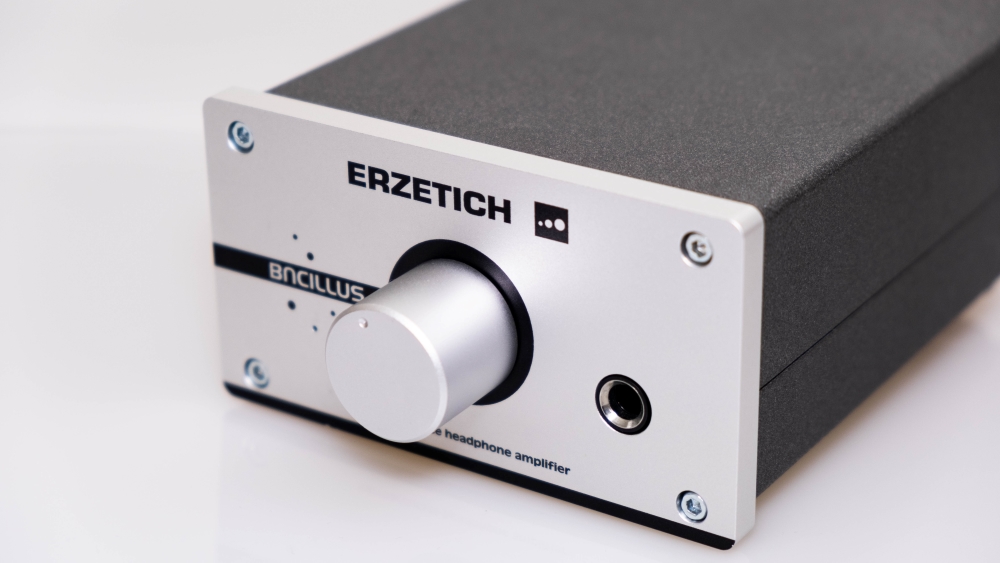
Unboxing Experience
Upon receiving it, walking back home with this small and lightweight package in my hands, my doubt started working me from the inside as I though at this size it should not overthrow my other dedicated headphone amps I’ve heard in the past.
Unboxing the small package, a wild smile appeared on my face, I know my other two favorite single ended headphone amps called Gilmore Lite Mk2 and Burson Fun are already small in size, but Bacillus is even smaller but mind you: it’s heavier than both and that is a good sign.
Bacillus came double boxed with lots of foam inside for extra protection, in the package you will also find a power cable and the owner’s manual, nothing more and nothing less.
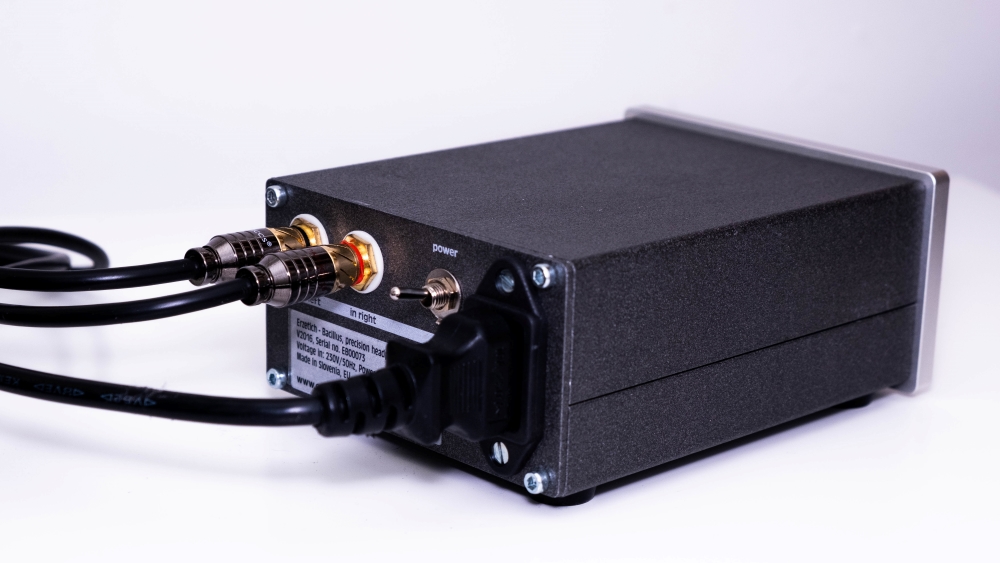
Design & Looks
Bacillus looks extremely simple and minimalistic; I would call it industrial looking as well due to the chosen color and the robust metal switch on the back.
The front panel is made out of very thick aluminum plate that houses an analog volume pot, a standard 6.35 mm (1/4”) headphone output and a small white-LED that indicates if the device is engaged or not. Underneath it four rubberized feet can be spotted; they have a screw inside so you can change them with nicer ones if needed.
On the back you’ll find an AC inlet, suggesting it has a power supply inside, an On/Off power switch and a single pair or RCA connectors. The body is made out of matte sandblasted like metal housing that can be easily unscrewed for a peek inside.
The amp looks extremely clean and simply to use, just plug in your source and headphones and press that play button.

Under the Hood
Bacillus is a solid-state headphone amp based on a single dual op-amp followed by a powerful Burr-Brown current output buffer. At the input two big ‘n fat Wima red capacitors can be spotted, as I can see Bacillus has a very simple yet very effective audio circuitry inside. I like a lot that the power supply is separated by a thick metal plate so the power supply hum would not leak into the audio signal, that’s a really nice touch and not a lot of manufacturers are doing that.
Bacillus works in Class AB and should drive low and high impedance headphones alike.
There is this weird thing, I even enquired with Blaz about it, on paper Bacillus is offering about 180 mW of power into 8 Ohms and about 160mW of power into 600 Ohms. That doesn’t look like a lot of grunt and power, but with my Quad ERA-1 open-back headphones I was comfortable sitting at around 12 O’clock on the volume pot and my ears begged lowering that volume. With Sennheiser HD660S it is basically the same, the volume even dropped between 10 and 11 o’clock. I am not really sure who misread those numbers.
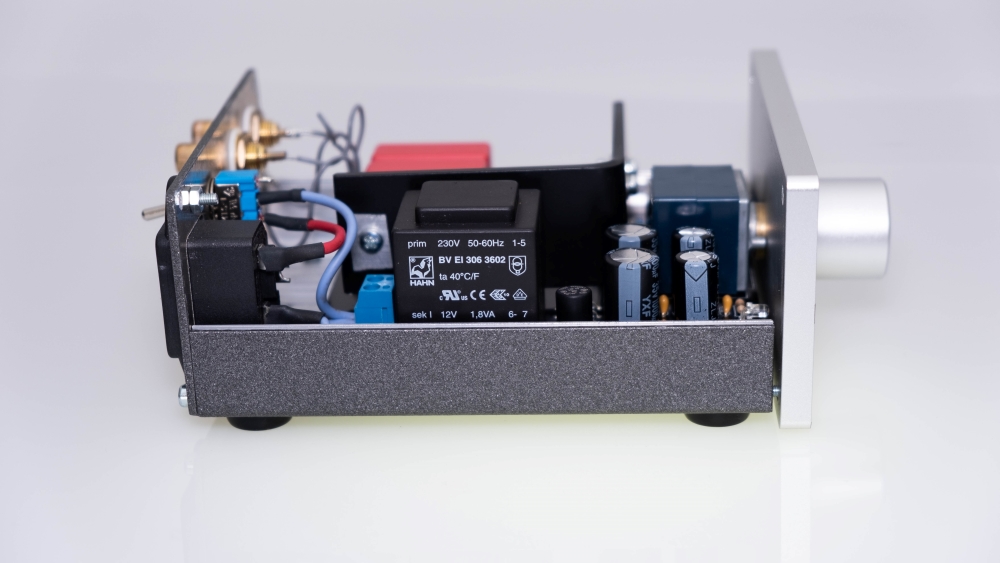
We have two possibilities: other manufacturers are overinflating their power ratings or Blaz is offering sweet cookies to this little beast to tame it and lower those numbers.
Long story short: Bacillus could drive to ear-bleeding levels all my headphones: dynamic, planar-magnetic or balanced armature based. Look at this one as a Naim amp of the headphone world, as a Naim watt is more powerful than a Cambridge Audio watt, I know how stupid and crazy that sounds, a kilo is a kilo right? But that seems not to be the case here.
One important aspect is that Bacillus is not using output capacitors so the sound should be super clean and free of any grain. Of course, the RCA’s are gold platted and internal wiring is silver plated copper for best possible conductivity.
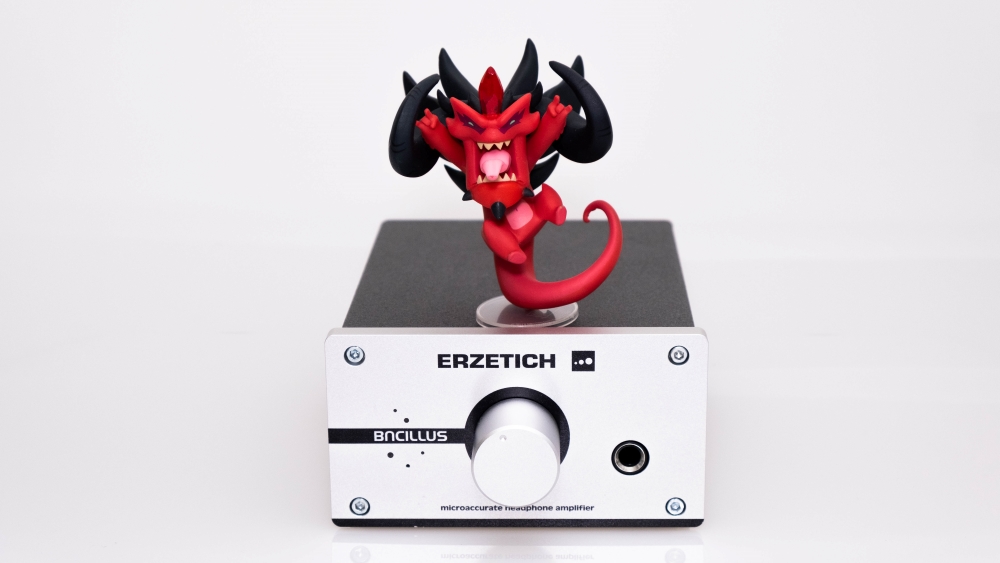
Releasing the Inner Demon
Bacillus might look small, cozy and cute but it sounds loud, mean, fast and super controlled. This is very unusual since what I see doesn’t make sense with what I am hearing.
Blaz is characterizing Bacillus as slightly bright sounding, but I beg to differ in a different direction and just shows the human nature and how everybody hears differently.
To me Bacillus is linear and fun, extended, natural sounding, has a speedy performance and lots of control. I’m calling bright sounding other type of headphone amps that over-emphasize the treble area and Bacillus seems like a cast-away from that group.
It’s quite difficult describing an audio component that sounds linear and doesn’t leave a big stain or coloration in the audio chain, to me Bacillus is like that with just a touch of naturalness.
The more I am listening to it the more I want to try it with different DACs and portable sources, I just wanted to make sure everything I hear on one source is applicable on the other. I listened to it mostly connected to my Matrix Audio X-Sabre Pro and to a loaner Mytek Brooklyn DAC+ and just before bed connected to a portable FiiO M11 with a special 3.5mm to RCA cable.
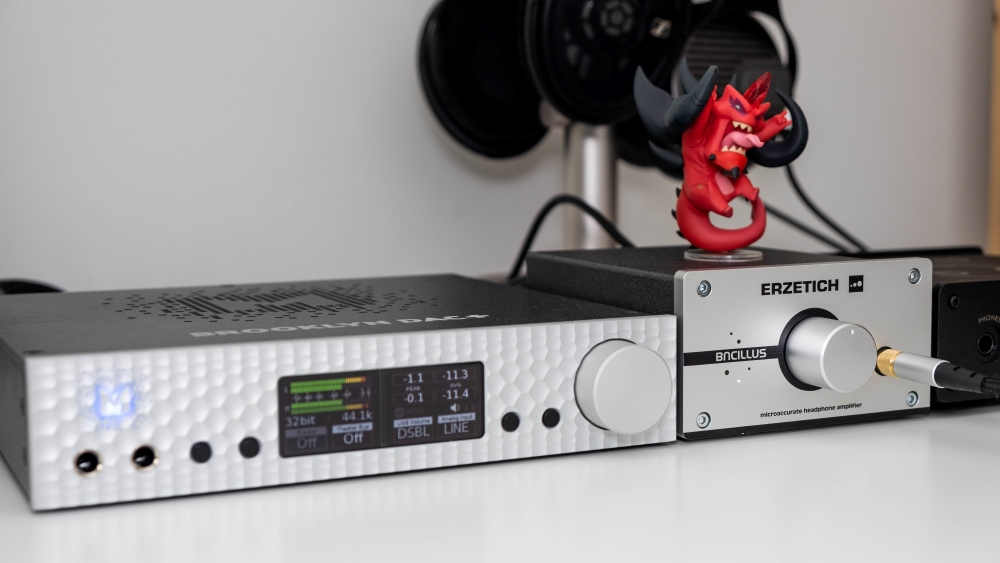
Transient Response
I would like to start with transients since I believe it is doing enough justice to fast paced music be it old or modern.
I am lately fascinated by this Mongolian Folk-Metal band called The HU, as of right now they have only two lossless songs released on Tidal.
Listening to their song called Wolf Totem there is a strong kick in the treble and a lot of presence in the midrange. The whole song has a faster pace and an incredible impact into eardrums without being overwhelming.
The horse-head fiddle sounds warm and inviting and switches places from left to right to create this magical-like performance.
The most incredible part is of course throat singing that is making me goosebumps mostly listening with headphones on. There aren’t a lot of songs where a human voice can reach low into the bass area, but throat singing is doing exactly that.
What can I say? Bacillus had a fast pace, an incredible impact and sounded natural and quite deep reaching.
Don’t be fooled by its small foot-print as Bacillus slams hard, kicks into the nuts and it is very head-bang inducing.
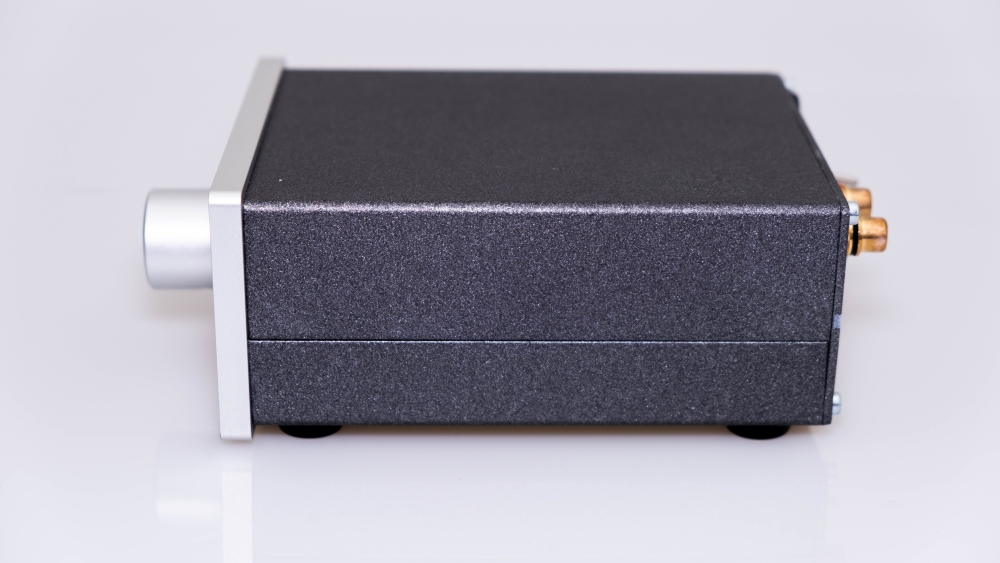
Acoustic Tonality
Listening to Dave Brubeck Quartet – Take Five revealed a resolving yet natural performance. This tune is crowded and bombarded with multiple musical instruments and pin point imaging is just spot on. But what really impressed me on this song is how vivid, alive and real everything sounded.
This impressive technical performance was been greatly helped by a good fluidity that binds the musical notes in a natural way.
I think Bacillus has an impressive natural tonality where everything is there and nothing is missing. The piano mixed with tons of drums, saxophone and double bass created an easy going, smooth sounding and mood lifting experience for me.
Transparency and Resolution
Closing my eyes, I was walking by easily between those notes listening to Good Mystery by Amber Rubarth. The voice over sounds so crisp that at times it seems to be completely detached from the recording.
Bacillus has impressive transparency levels; I would not call it ultimate transparency but it’s on a higher level than usual. The important thing that there isn’t a sign of muddiness or of a foggy presentation so everything is pretty airy and spread out around me.
Listening to Vivaldi – Four Seasons by The City of Prague Philharmonic Chamber Group revealed so much airiness around the notes, it is taken into extreme levels as you can easily hear how the performers are inhaling air or moving their feet, truly an impressive treat.
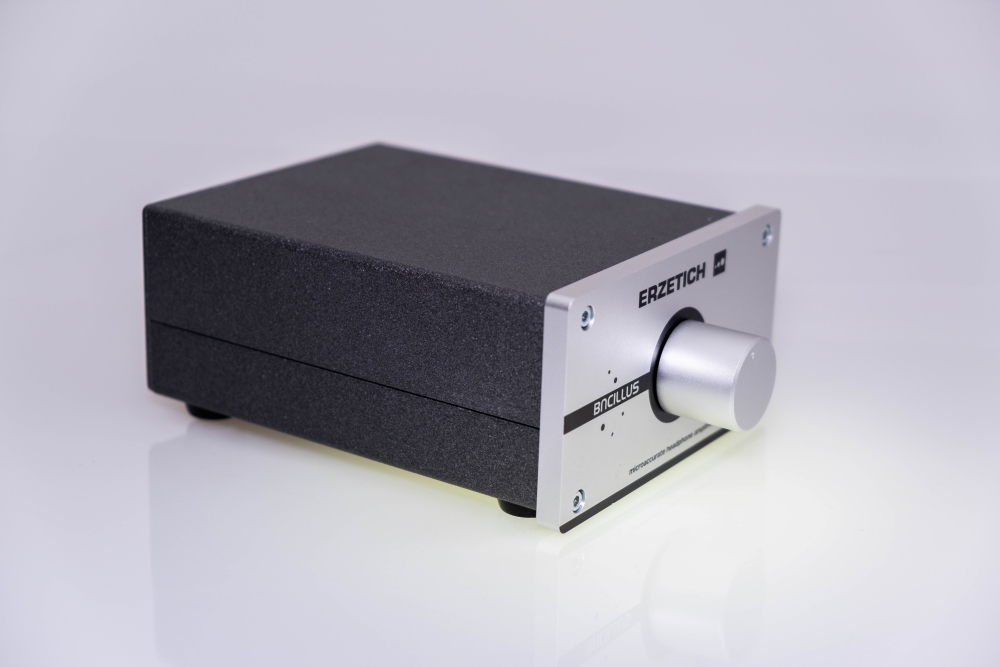
Depth & Soundstage
Changing tracks of the same recording to Summer III in Presto (fast) movement and comparing the same performance to other headphone amps it was clear to me that Bacillus will impress more with its depth than with its soundstage size.
It is not forward sounding mind you; soundstage level is almost at the shoulder level; it is quite spread around the listener but it is not enveloping my entire head and body. For a complete 3D and out of head experience a higher performance and costlier headphone amp will be needed.
In exchange Bacillus rewarded me with a very good depth where I could easily perceive that few instruments are closer to me and others are further away from me. Closing my eyes, I can almost draw a picture of the stage and the location of the musicians.
I’m glad that it will never sound overcrowded or up-front as I’m really running away from such performances.
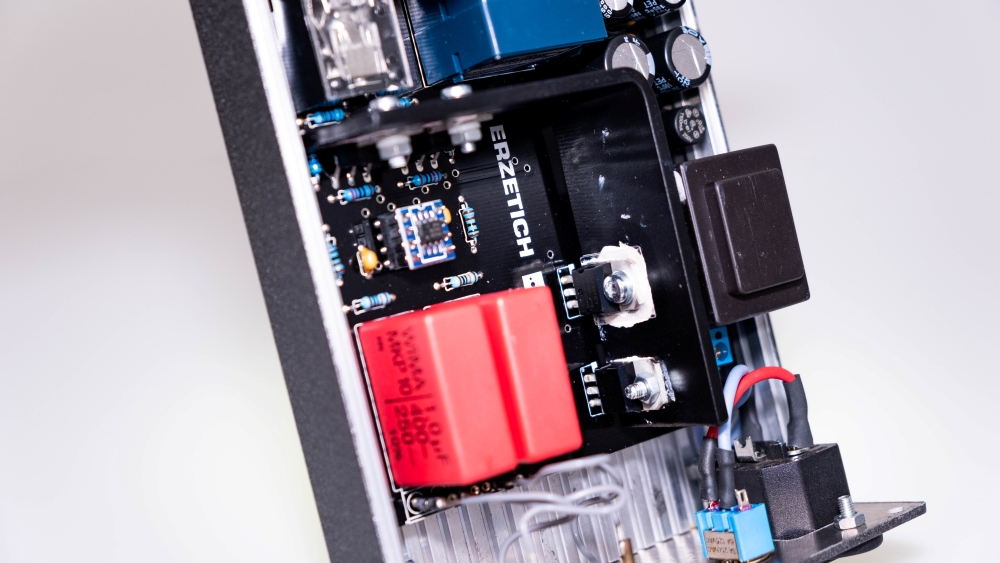
Background Noise
The last two IEMs that I reviewed very recently, the amazing FiiO FH7 and the less-amazing KZ AS16 are notorious as they are highly sensitive to background noise and hum so Bacillus will have a really difficult test ahead. With FH7 and KZ AS16 there is a faint hum on the background, but it is barely audible. Once pushing the play button, you cannot distinguish or hear it anymore so this is really a non-issue, but should be mentioned.
Listening to other three pairs of desktop open-back headphones, there is a completely black background, I presume only very sensitive and low impedance earphones will pick that hum.
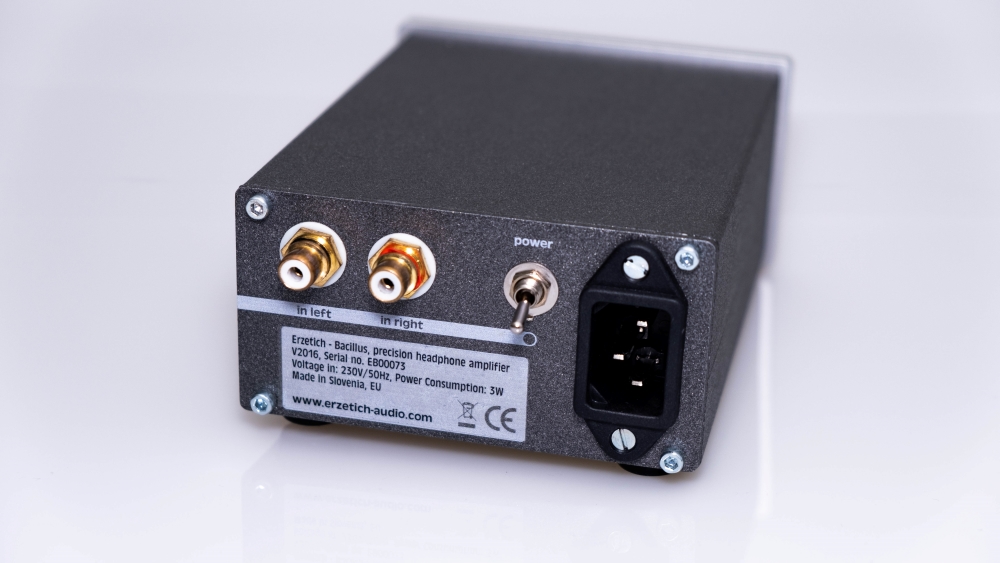
Frequency Response
From the deepest and lowest bass to highest treble the performance is very linear and super extended to both ends. Bacillus has a really wide frequency band with no ups or downs and that can be spotted basically with any tune.
With the right headphones I had ear-shacking bass levels and absolute levels of control. The same can be said about the treble response that would offer a lot or shimmer and outline and close to zero brightness or harshness.
Due to a very tight and clean nature the whole frequency range is defined and you can hear a lot of texture on wood instruments.
Besides having a quicker bass response, it also offers a lot of slam and has a lot of weight to it. Bacillus can move a lot of air and would not struggle with harder to drive headphones
Midrange performance is as impressive as the rest of the spectrum, voices are centered and very defined. Some might call them even musical, organic and smooth sounding. I call them close to a real thing sounding.
Power Output
With portable IEMs I could not pass the 9 o’clock mark and with full-sized headphones maximum I could go is the 13 o’clock position, proceed with caution going higher than that. Now, my Gilmore Lite Mk2 is rated at 1W at full power, yet it struggles with low sensitivity headphones especially with planar-magnetics. Bacillus is rated at 180 mW and it is driving them at ear-bleeding levels and Gilmore Lite with its 1000mW is struggling… You should decide who inflated the power ratings, the truth is somewhere in the middle.
With Quad ERA-1 I had an incredible control over the diaphragm especially on faster music, it was very apparent on electronica and rock tunes.
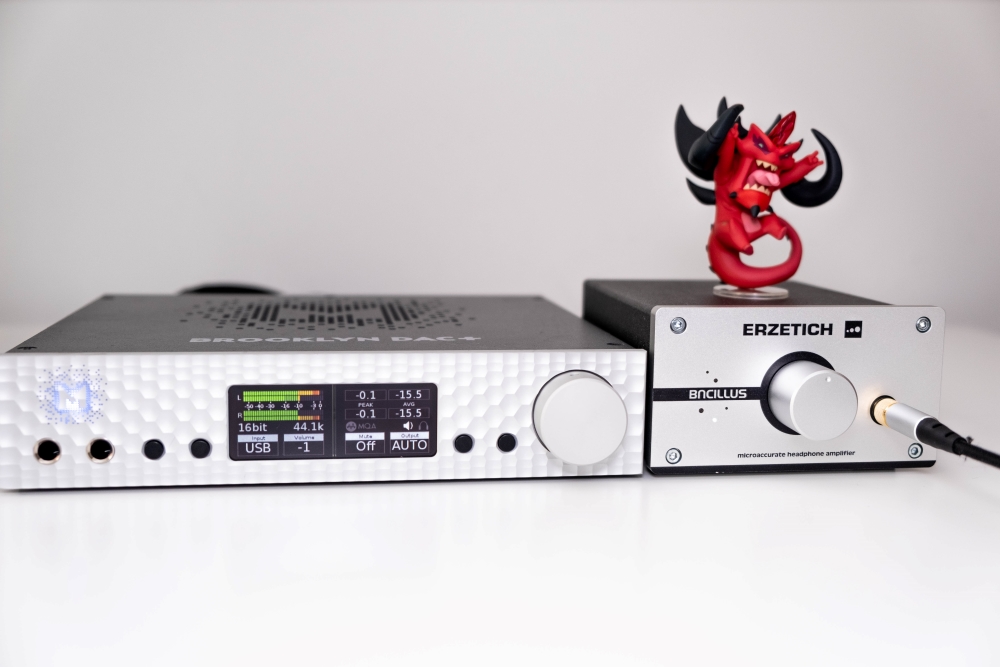
Comparisons
Erzetich Bacillus (500 EUR) VS Gilmore Lite Mk2 (500 USD)
I made a single comparison and that is with my Gilmore Lite mk2 that I praised and adored for quite some time.
In terms of build quality both are built at higher standards with thick metal faceplates, metal enclosures and rubberized feet, both have the same Alps Blue volume pot, there is a single HP out on both. On the back Gilmore Lite is offering an additional RCA input and a simple Pre-amp output. So, in terms of connectivity Gilmore Lite is slightly ahead.
Bacillus is significantly heavier as it incorporates a high-quality power supply inside, Gilmore Lite is bigger but lighter as it relies on an external but lower-quality switching power supply.
When it comes to sound there is a noticeable difference between the two.
Bacillus is sounding like a mean bad-boy, with an impressive kick and slam and with an overall heavier presentation. Bacillus is certainly on the fun side on things, with rock tunes I cannot stop myself from head-banging as it is mostly energetic and completely opposite of lean, smooth and relaxed.
Bacillus although having a medium-sized soundstage is having it wider and deeper than that of Gilmore Lite, I just can delve deeper into my recordings with it.
Gilmore Lite by comparison is a bit up-front and 2D sounding, it is more crowded with certain music and can be overwhelming at times because of that.
It is also too linear at times, doesn’t have such a fun-factor as it is the only head-amp that will just disappear from your acoustic chain. Gilmore Lite also has lesser slam in the bass and kicks like a 16-year-old girl on some passages. If you are looking for an invisible performance, that doesn’t add nothing into the mix, then Gilmore Lite will not sweeten or embitter your sound signature.
Power wise, Bacillus has bigger balls and a stronger grip over the headphone drivers.
Both are really good but Bacillus is just more fun sounding, kicks you harder and has more power on tap.

Conclusions
So, here we have it folks, an impressive little devil of a headphone amp isn’t it?
It’s mean, aggressive, biting and hard kicking, what’s not to like for faster modern music?
My congratulations to Blaz for an overachieving little headphone amp, I wish more people would know about it. There was a time when I strongly believed that only an expensive headphone amplifier should sound fun, energetic and linear in terms of FR, but sometimes there are exceptions to an old general rule.
Bacillus will not let you down if you are hunting for a fun listening experience that can power everything you throw at it and to me it is among the best compact sized headphone amp out there.
Possibly the best part yet: it’s so small that you can easily carry it in vacations and connect to a portable source, this is what I am planning to do.
Erzetich Bacillus will cost you 500 EUR and can be purchased directly from the manufacturer following this link
PROS:
- Impressive transparency and airiness
- Awesome kick, speed and slam
- Quite natural sounding that offers an easy-going flow
- Plenty of power for harder to drive desktop class headphones
- A lot of control and grip
- Linear frequency response
- Good depth and layering
- Sturdy construction, industrial design
- A very fun listening experience
- Good price for what it offers
CONS:
- Slight hum with sensitive IEMs
- Would like a second RCA input
ASSOCIATED EQUIPMENT:
- DACs: Matrix Audio X-Sabre PRO + X-SPDIF2, Mytek Brooklyn DAC+, Aune S6 PRO, Burson Swing & Playmate
- DAPs: FiiO M11, M6
- Headphone amps: Erzetich Bacillus, Headamp Gilmore Lite Mk2
- Headphones: Sennheiser HD660S, Momentum 2.0, Quad ERA-1
- IEMs: FiiO FH7, KZ AS16
